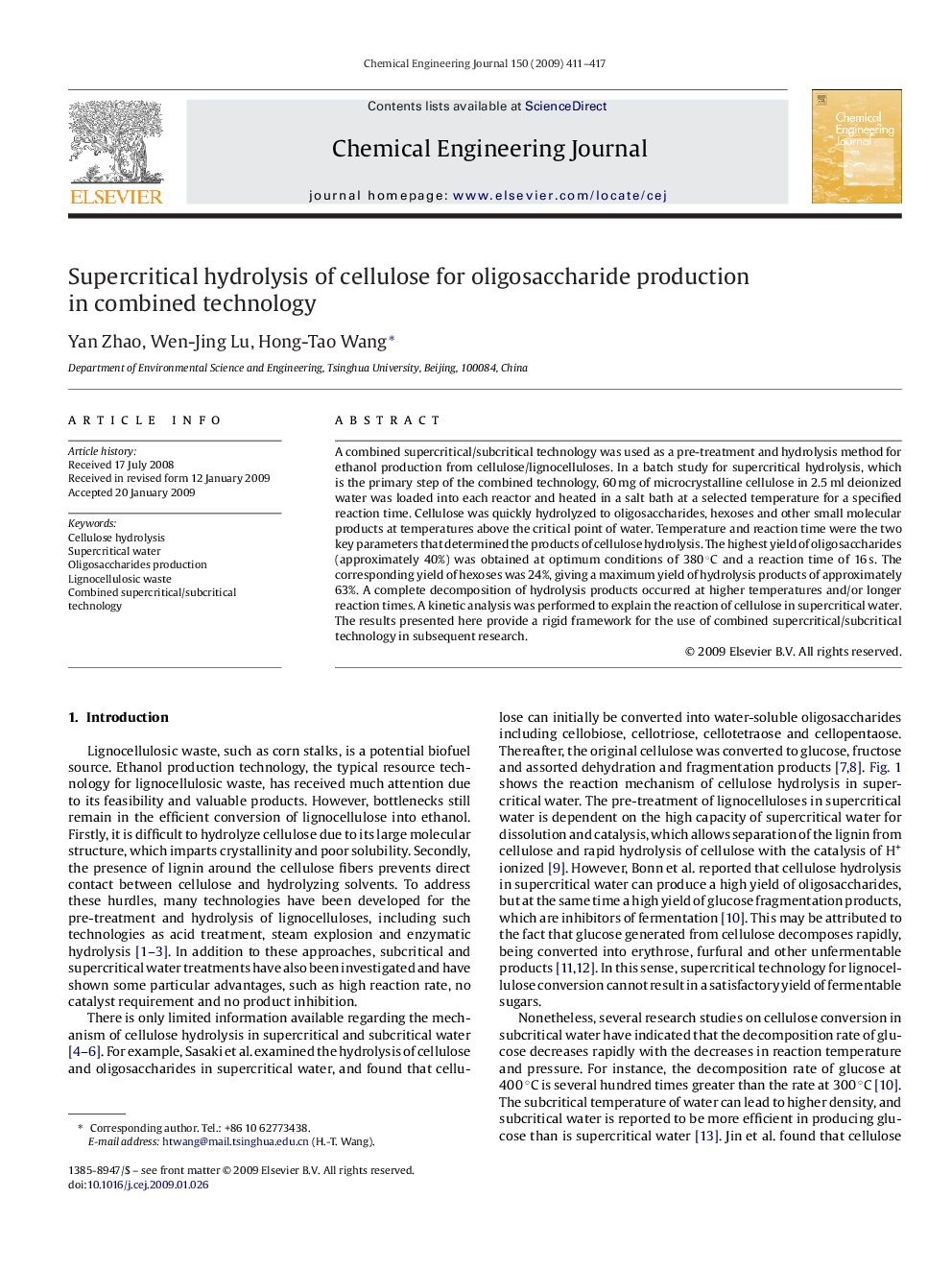| Article ID | Journal | Published Year | Pages | File Type |
|---|---|---|---|---|
| 152815 | Chemical Engineering Journal | 2009 | 7 Pages |
A combined supercritical/subcritical technology was used as a pre-treatment and hydrolysis method for ethanol production from cellulose/lignocelluloses. In a batch study for supercritical hydrolysis, which is the primary step of the combined technology, 60 mg of microcrystalline cellulose in 2.5 ml deionized water was loaded into each reactor and heated in a salt bath at a selected temperature for a specified reaction time. Cellulose was quickly hydrolyzed to oligosaccharides, hexoses and other small molecular products at temperatures above the critical point of water. Temperature and reaction time were the two key parameters that determined the products of cellulose hydrolysis. The highest yield of oligosaccharides (approximately 40%) was obtained at optimum conditions of 380 °C and a reaction time of 16 s. The corresponding yield of hexoses was 24%, giving a maximum yield of hydrolysis products of approximately 63%. A complete decomposition of hydrolysis products occurred at higher temperatures and/or longer reaction times. A kinetic analysis was performed to explain the reaction of cellulose in supercritical water. The results presented here provide a rigid framework for the use of combined supercritical/subcritical technology in subsequent research.
